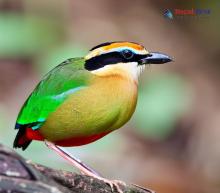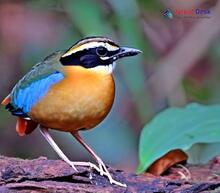When it comes to the study of birds, few genera captivate ornithologists and bird enthusiasts alike as much as the Pitta genus. These small, vibrant passerines possess a unique combination of beauty and intrigue that has made them an object of fascination worldwide. In this article, we delve into the origins, evolution, taxonomy, morphology, ecology, and presence of these amazing avifauna in Nepal.
Origin and Evolution
The origin of the Pitta genus can be traced back to the supercontinent Gondwana, which existed around 180 million years ago. As Gondwana split apart and formed separate continents over time, the ancestral pitta species diversified into the varied range that exists today. The evolutionary history of these birds is still a topic of ongoing research; however, studies indicate that their ancestry could be linked to ancestral corvoid birds native to Gondwana.
Taxonomy: A Colorful Array of Species
The Pitta genus comprises around 40 species classified within two subfamilies - Erythropitta and Hydrornis. The taxonomy of pittas has undergone numerous revisions over the years due to their elusive nature and overlapping characteristics. However, through molecular studies and phylogenetic analyses, scientists continue to strive for a more definitive classification system for these fascinating birds.
Morphology: Bold Patterns and Elusive Behavior
Pitta birds are renowned for their striking coloration patterns consisting of blues, greens, yellows, reds, and even purples. They possess short wings and strong legs adapted for hopping along the forest floor in search of nourishment. Their stout build enables them to move through dense undergrowth with ease while their distinctive bill aids in catching their prey.
Ecology: Life in the Tropical and Subtropical Forests
Pittas inhabit dense tropical and subtropical forests in Asia, Africa, and Australasia. Their elusive nature often makes them difficult to spot, as they forage on the forest floor beneath the thick cover of vegetation. Their diet primarily consists of insects, small reptiles, and fallen fruit. Breeding seasons vary by species, but many build cup-shaped nests on the ground or in low shrubs, often amidst tangles of vines or tree roots for added protection.
Presence in Nepal: A Birdwatcher's Delight
Nepal is home to several pitta species due to its diverse habitats that cater to the varied ecological requirements of these birds. Among the pitta species found in Nepal are the Blue-naped Pitta (Hydrornis nipalensis), Rusty-naped Pitta (Hydrornis oatesi), and the Blue Pitta (Hydrornis cyaneus). Birdwatchers planning a visit to Nepal ensure they make time for glimpsing these beautiful creatures while exploring the rich forests of this gem of a country.
In conclusion, the Pitta genus presents a captivating world of avian mysteries waiting to be unraveled. The exploration of their origins, evolution, taxonomy, morphology, ecology, and presence in Nepal only serves to heighten our admiration and respect for these incredible birds. May our fascination with them encourage further research and conservation initiatives to ensure their continued existence across their diverse habitats.




